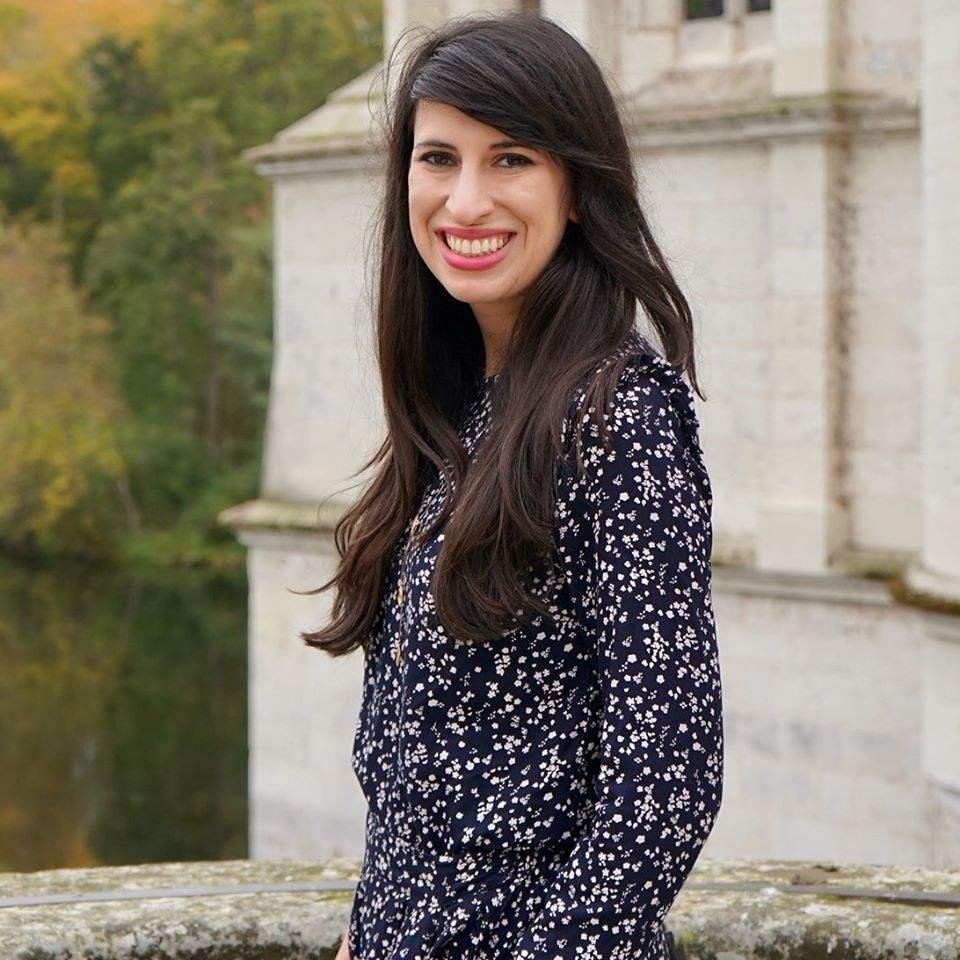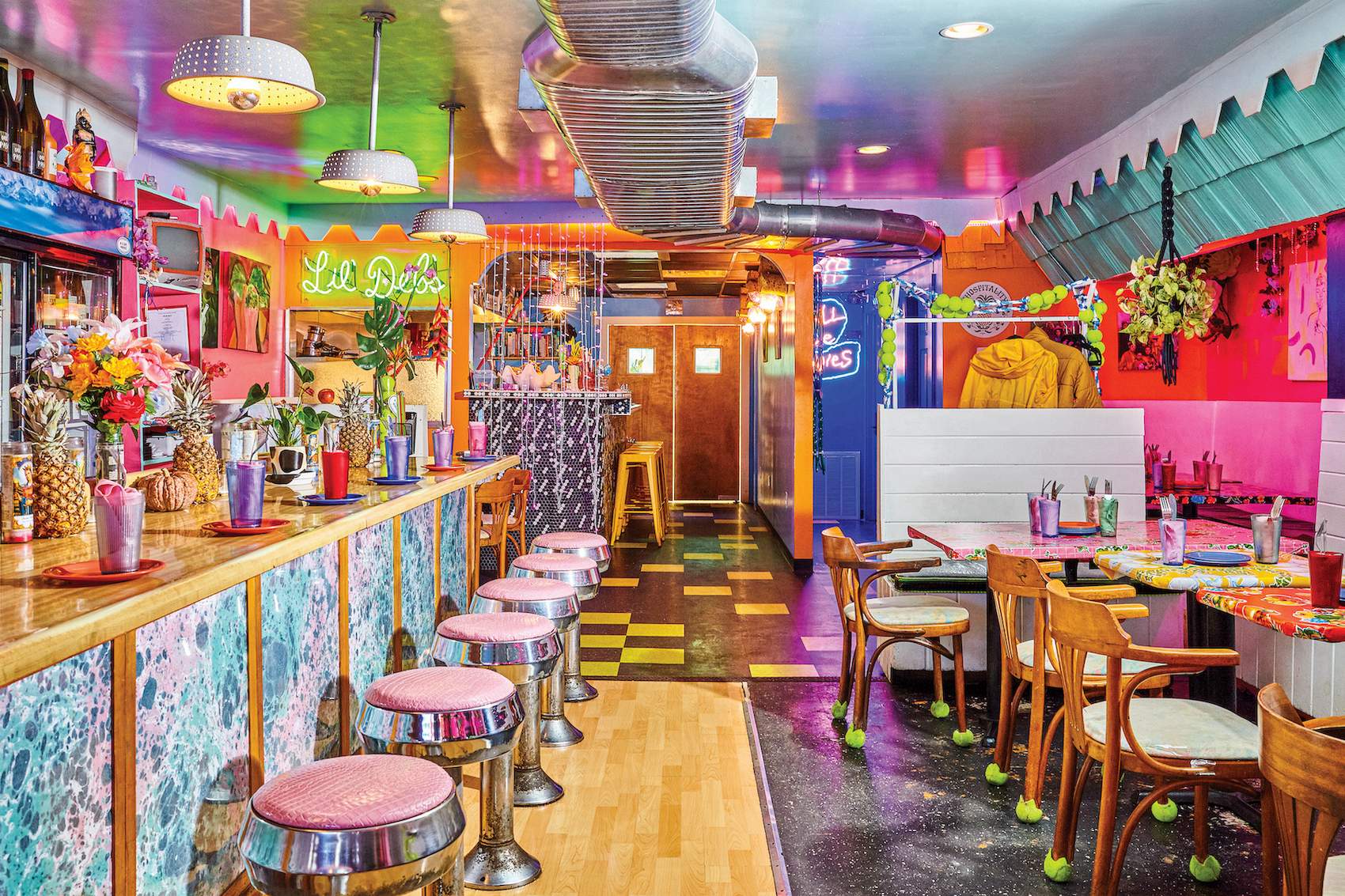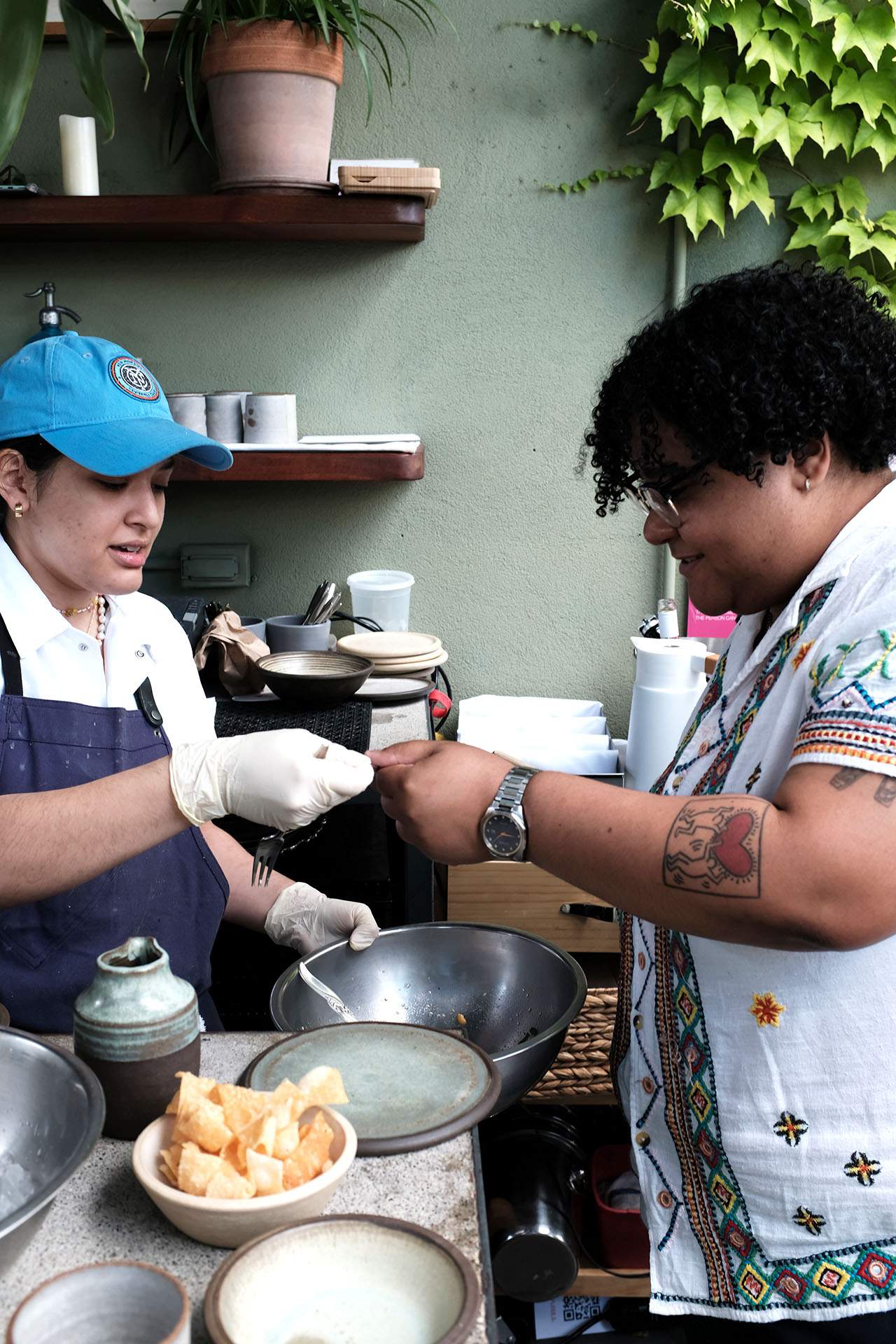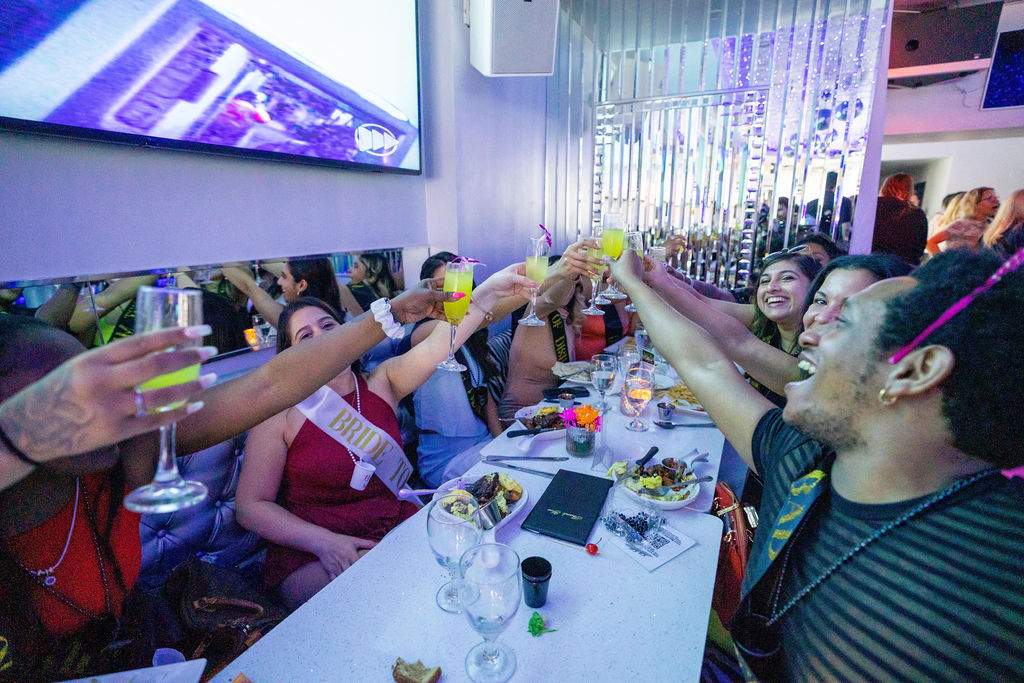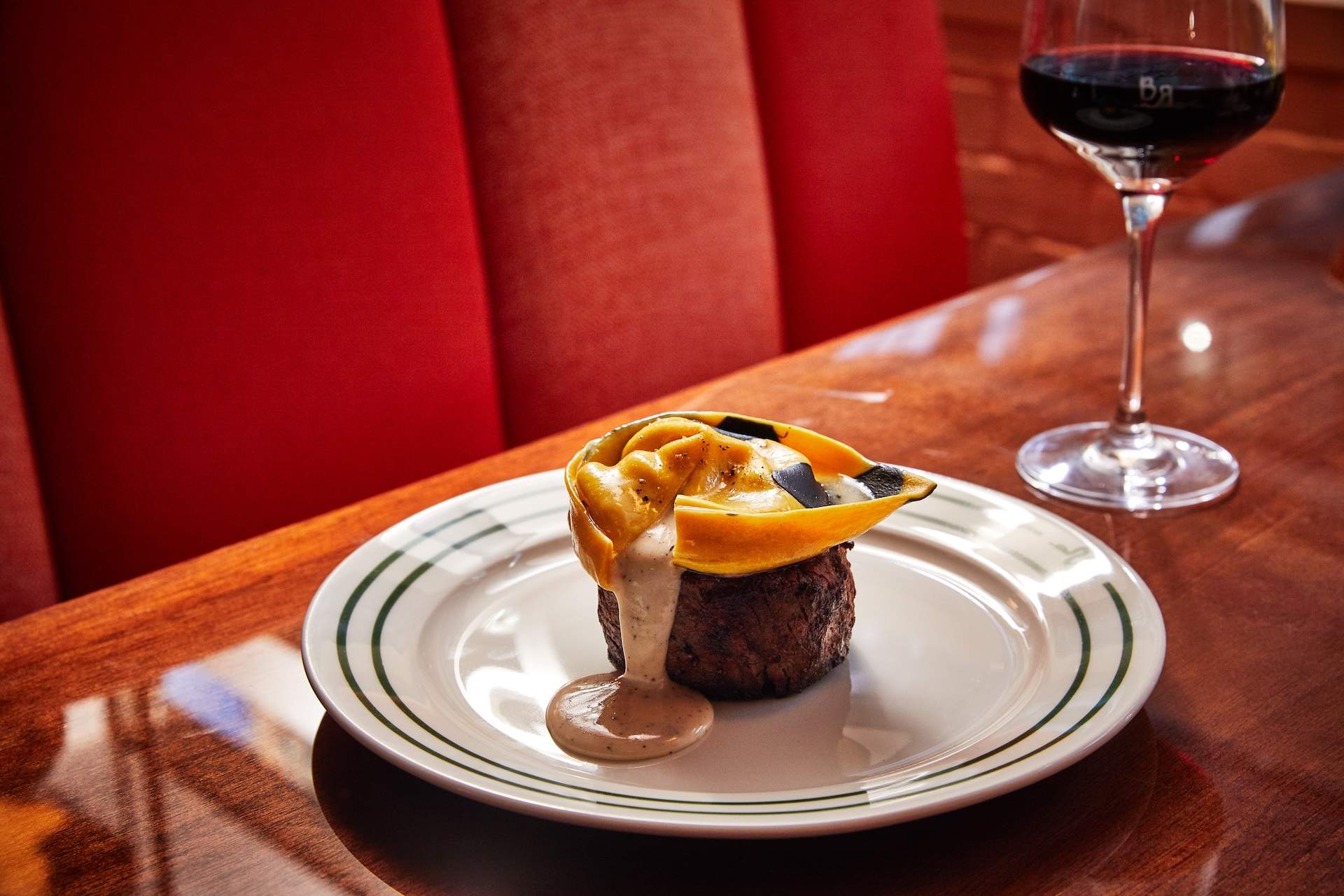Walking into Lil’ Deb’s Oasis in Hudson, New York, feels different—in an exceptional way. The restaurant’s pink entrance lies just past a community fridge that collects donated meals. Inside, there’s color everywhere: bright walls, neon signage, a jellyfish lava lamp, retro pink bar stools, and kitschy vinyl tablecloths in cow-spotted or plaid patterns.
Everything on the menu has 69 cents added to it, all of which is donated to mutual aid organizations. Diners can also contribute to a community fund, which goes toward covering a future customer’s meal. Groovy, global music plays throughout the restaurant, adding to the eclectic, fun-loving atmosphere.
Part art installation, part destination-worthy neighborhood restaurant, Lil’ Deb’s, which opened in 2016, epitomizes the modern queer restaurant. It’s an emerging trend, with proudly queer restaurants now popping up across the country. These spaces better reflect the diversity of the LGBTQ community, in ownership and patronage.
There’s no coded language to signal that these establishments are gay-friendly; these restaurants showcase pride at every opportunity, from queer-made spirits and cheekily named drinks on cocktail menus to openly queer staff and diners. As a counterpart to the nightlife scene, these queer spaces offer daytime, non-alcohol spaces to gather, organize, relax, celebrate, and most importantly, to eat.
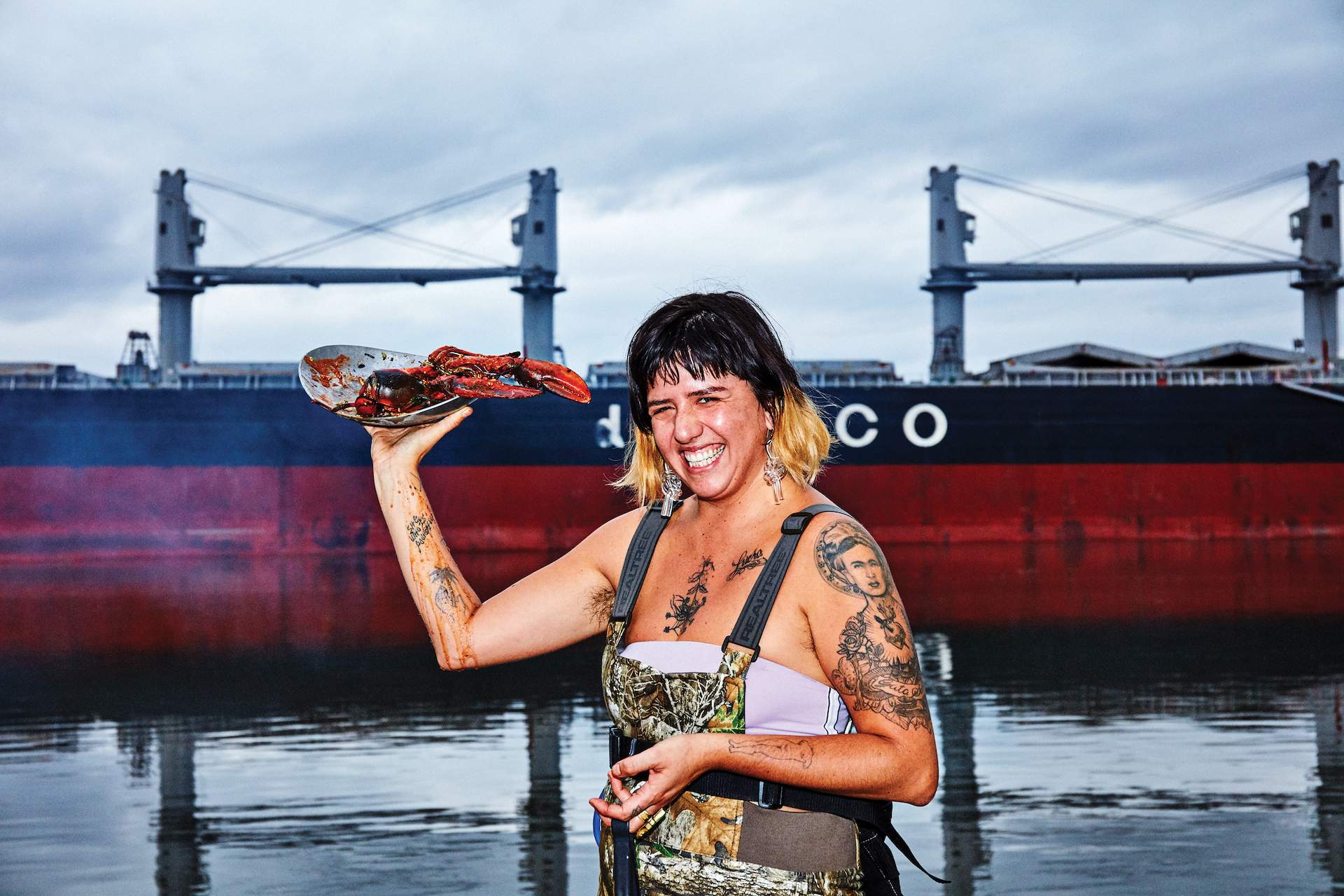
In New York, New Mexican cafe Ursula hosts queer pop-ups and parties. Lebanese spot Edy’s Grocer hosts Pride themed-weekends and sit-down dinners with LGBTQ chefs in its bodega-size shop. The long anticipated fine-dining restaurant HAGS is expected to open soon in the city, embracing a queer, inclusive potluck theme. But the trend isn’t limited to New York; in Washington, D.C., As You Are Bar serves a daytime menu of salads and coffees for queer remote workers looking for a place outside of clubs and bars.
“The roots of today’s queer restaurants are definitely in a decades-old struggle to build and maintain safe queer spaces,” says food writer and historian John Birdsall. He points to the AIDS crisis in the 1980s, when gay men needed safe spaces free from stigma, ignorance, and potential violence, as well as restaurants for women, like the still-open feminist bookstore and vegetarian cafe Bloodroot, in Bridgeport, Connecticut, that provided a place where same-sex couples could be moderately affectionate with each other or get to know others in the community. Today’s queer restaurants are building on that ethos.
“We never set out to create a queer restaurant. It kind of just happened, which I think is really beautiful,” Lil Deb’s owner Carla Perez-Gallardo says. “It’s really special to see how much queer community spaces were needed, how many people in the area show up, relieved and excited to have a place to go.”
Growing up with an Ecuadorian and Argentinian family in Queens, Perez-Gallardo says she didn’t find enough flavorful food when she moved to the Hudson Valley over a decade ago. Six years ago, she turned her desire for spice and a community hub into Lil Deb’s Oasis. “It was really satisfying to build community around something that’s part of my identity,” she says. “We knew we’d be more than just a restaurant.”
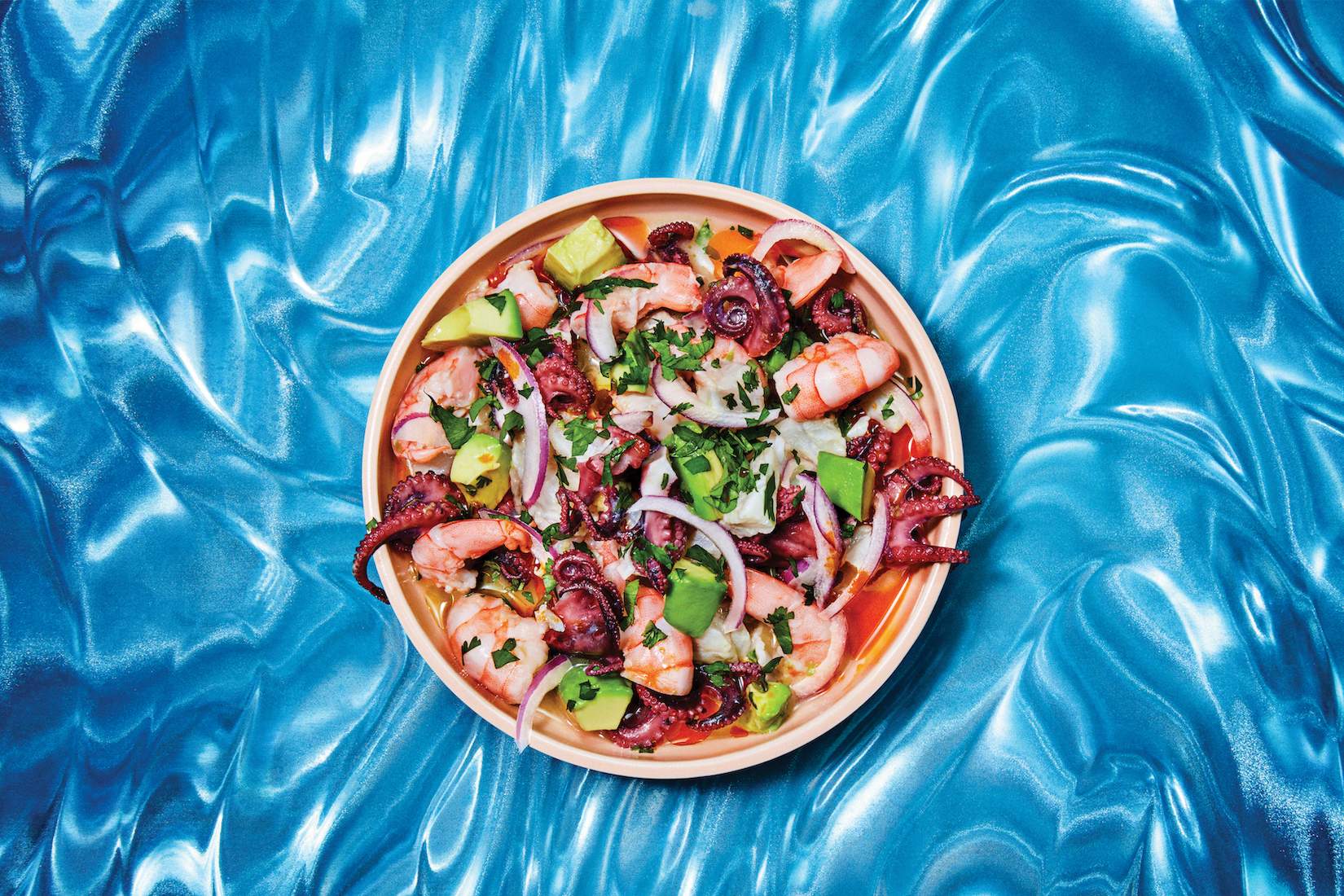
Leaning into the need for a queer space—there are no gay bars within reasonable driving distance—Perez-Gallardo collaborated with former business partner Hannah Black to host queer performance nights and drag shows at the restaurant. The menu is ever-evolving, highly seasonal and always open to tweaks from a creative kitchen staff. The whole fried fish of the day, served sprawled on a cafeteria platter with fresh herbs, and a ginger vinaigrette, is never identically replicated.
“I treat the restaurant like a studio space; it’s very alive,” Perez-Gallardo says. “That energy is central to what queer identity is. It’s not fixed, it’s always changing, those two things run in parallel for me.” Being able to hire young people with no or limited kitchen experience and provide a gender-affirming, culturally rich, educational, and supportive atmosphere has been a highlight for Perez-Gallardo as an entrepreneur. “People on the margins often don’t have a space that feels safe to them or to feel themselves in,” she says. “To provide that to anyone, it can be really magnetizing.”
In San Francisco, Milk Cafe is a queer hangout featuring pictures of drag queens on the walls, art by queer makers, and a prominent rainbow banister. Partners Sharon Ratton and Scoots McKee opened the space in 2021, naming after Harvey Milk, the first openly gay man elected to public office in California.
“During the pandemic, a lot of our public spaces and social gathering places closed,” McKee says. “We need more space to gather.” Since opening, Milk Cafe has become a favorite among local queer teens.
As part of their mission, Milk Cafe prioritizes working with LGBTQ- and BIPOC-owned businesses. Pastries come from the Black-owned Rize Up, bagels from queer-owned Boichik Bagels, and coffee from Queer Wave, run by a trans person in Oakland passionate about “smashing the patriarchy,” McKee said. Milk’s ever-changing house-made sodas (in flavors such as bubblegum and strawberry rose lemonade) and flavored nitro lattes (in variations including coconut and rose) have been a favorite among visitors so far; regulars often grab breakfast here and then make their way to McKee’s attached hair salon, Glamarama.
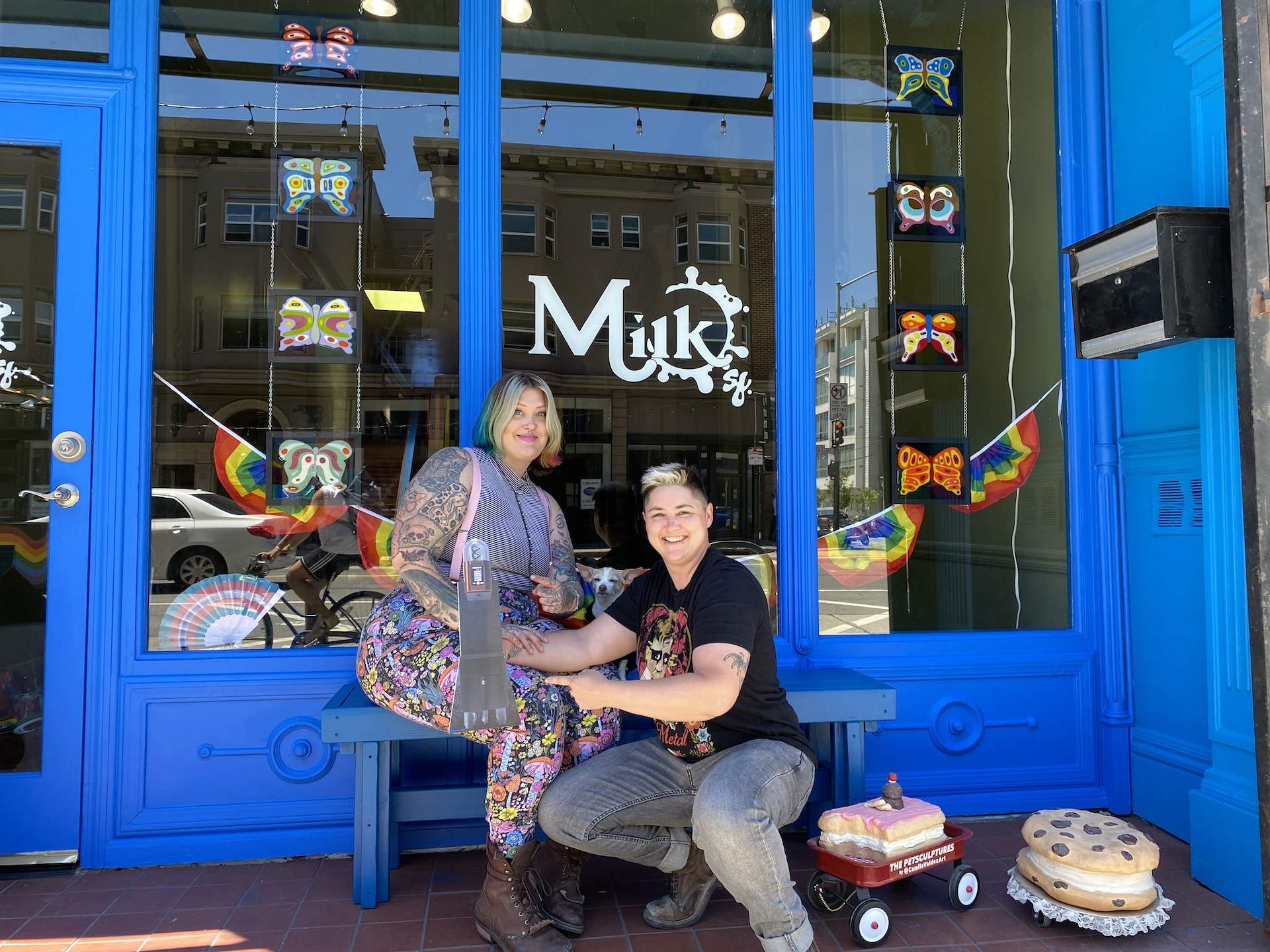
Even in San Francisco, even with the success of Glamarama, even with such a strong community, Ratton and McKee were nervous to open a queer cafe. “It’s scary to come out as a queer space,” McKee says. “People may have feelings that are not in our favor, but if businesses can say they won’t cater to gay people, we have to fight back.”
The path for queer restaurants is far from linear, or even upward. The owners of MeMe’s Diner, Brooklyn’s first exuberantly modern queer restaurant, opened up about financial challenges that led to their 2020 closure. In Los Angeles, the popular queer cafe Cuties couldn’t sustain its business through the pandemic, and it’s unknown how many business plans or queer concepts didn’t come to fruition because of COVID-19-related challenges in the last two years. Still, the enduring popularity, creativity, and passion behind these queer restaurants shows a demand for LGBTQ space beyond nightlife, spaces to congregate, share a meal, and be in community.
“It makes everyone really happy,” McKee says. “We just want to see more queer cafes pop up all over the place. We want to be an inspiration to other people … Do it, come out as a business. It’s magical to be a space that people really revere.”
Melissa Kravitz Hoeffner is a writer based in NYC. Follow her on Twitter and Instagram.
